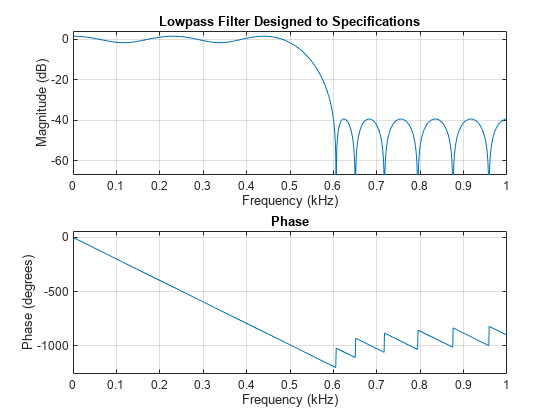firpmord
Parks-McClellan optimal FIR filter order estimation
Description
[___] = firpmord(___,
specifies a sample rate fs)fs. fs defaults to
2 Hz, implying a Nyquist frequency of 1 Hz.
Examples
Input Arguments
Output Arguments
Algorithms
The firpmord function uses the algorithm presented in [1]. This function produces
inaccurate results for band edges close to either 0 or the Nyquist frequency,
fs/2.
Note
In some cases,
firpmordunderestimates or overestimates the ordern. If the filter does not meet the specifications, try a higher order such asn+1orn+2.In some cases, the algorithm estimates a negative value for the filter order. If that happens, the function returns
nas0.
References
[1] Rabiner, Lawrence R., and Otto Herrmann. “The Predictability of Certain Optimum Finite-Impulse-Response Digital Filters.” IEEE® Transactions on Circuit Theory. Vol. 20, Number 4, 1973, pp. 401–408.
[2] Rabiner, Lawrence R., and Bernard Gold. Theory and Application of Digital Signal Processing. Englewood Cliffs, NJ: Prentice-Hall, 1975, pp. 156–157.
Extended Capabilities
Version History
Introduced before R2006a

